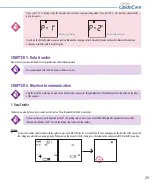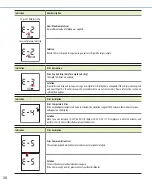
42
Appendix 1: Information for Healthcare Professionals
Protection against infections
There is a potential risk of infection. Medical staff using the STANDARD LipidoCare Analyzer to perform measurements for more than one patient must be aware
that any object coming into contact with human blood is a potential source of infection.
•
Use gloves.
•
Apply blood outside the Analyzer. When measuring glucose in several persons clean and disinfect the Analyzer before each measurement as blood
cannot be applied using capillary pipettes.
•
When measuring cholesterol and triglycerides in several persons, always use capillary pipettes to apply blood outside the Analyzer.
•
Dispose of used capillary pipettes and lipid test strips in a clinical waste bin.
•
Follow all other locally applicable guidelines and regulations on health and safety.
Appendix 2: References
1.
American Diabetes Association: Standards of Medical Care in Diabetes-2013, Diabetes Care, Volume 36, Supplement 1, January 2013, S11-S66.
2.
Siedel J, Hagele EO, Ziegenhorm J, Wahlefeld AW. Reagent for the enzymatic determination of serum total cholesterol with improved lipolytic efficiency.
Clin Chem 1983;29:1075-80.
3.
Expert Panel on Detection, Evaluation, and Treatment of High Cholesterol in Adults. Executive summary of the Third Report of the National Cholesterol Education
Program(NCEP) Expert Panel on Detection, Evaluation, and Treatment of High Cholesterol in Adults(Adult Treatment Panel III). JAMA 2001;285:2486-97.
Return
You should contact SD Biosensor Customer Service before returning your Analyzer. You will be instructed how to return the Analyzer to SD Biosensor, Inc.
Returned Analyzers without this authorization will not be accepted.




































